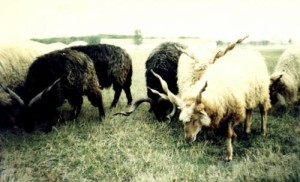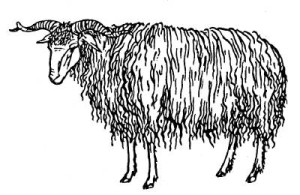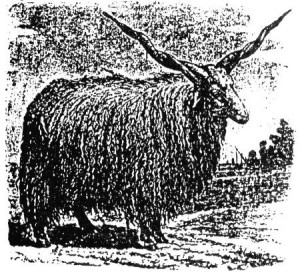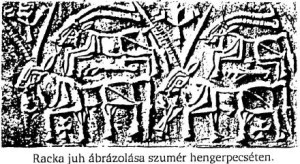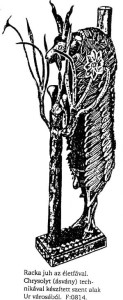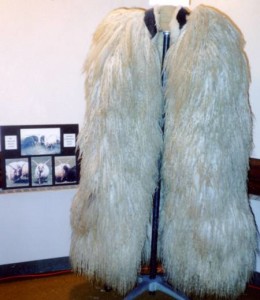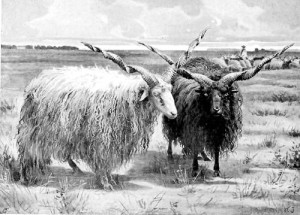RACKA
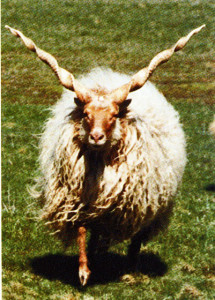
The ancient Hungarian sheep, the RACKA, has long curly wool and a unique, noble head with twisted horns. Its homogeneous features and color developed over thousands of years of breeding, due to the sharp eyes, excellent taste, and instinctively good sense of breeding of the Hungarian shepherds.
The racka lives only in territories inhabited by Hungarians. It is an enduring, stout animal like the Hungarian horse, and it can live in pastures where other species of sheep would perish.
The Hungarian sheep, like the grey cattle, was both a “living tin” and a milk-producing animal. Our ancestors dried the meat and made felt from the wool of the racka. The felt was used to cover their yurts and for embroidered frieze coats (SZŰR). The skin of the sheep was used several ways: as fur coats, wide sheepskin coats (SUBA), doublets, and other articles.
There are about five hundred species of sheep in the world. The Hungarian sheep had two subspecies in the Carpathian Basin: the racka was bred on the Great Hungarian Plain (this is the Hortobágy breed) and the so-called cigája was raised in Transylvania. Herds of merino sheep were brought into Hungary in the 18th Century, which changed the breeds.
In 1778 the council of the Governor-General asked the following question in an all-around inquiry: “What hinders the breeding and multiplication of the nobler sheep and how could we promote it?” They got the following answer from the town of Karcag: “Here the Hungarian type of sheep have been bred up to now, because we believe them the most suitable for the quality and quantity of pastures, and also its breeding is habitual among the local people.”
In 1832, “the illustrious association of sheep farmers” complained at Kunmadaras that in spite of their agreement that merino and racka rams might graze together, council member András Dús and his brother, sheep farmer Gergely Dús, sent a message to the shepherds that “if merino rams rub against their Hungarian rams, they will beat the shepherd to death.”
So, the changes did not go on smoothly. It is not an accident that racka sheep were bred longest on the Great Hungarian Plain – especially on the Hortobágy steppe and in the Nagykunság…
István Győrffy, 1941
Source: Mihály Kútvölgyi, Sunshine Shepherd Boy, The Heritage of the Herdsmen,Timp Publishing House, Budapest 2000
American Hungarian Museum, No. 88, 2003

